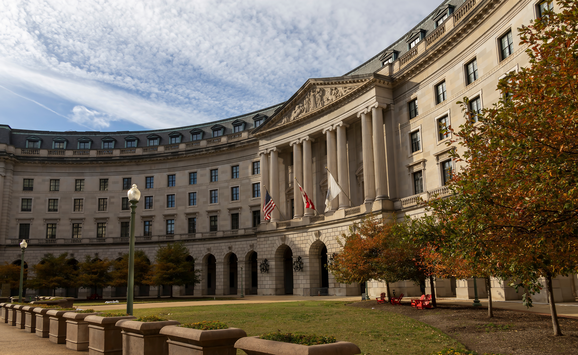A victory for conservation may be imminent. Congress looks poised to pass a bill that will provide stable annual spending streams from the Land and Water Conservation Fund (LWCF) for the foreseeable future. If the bill passes, the entire $900 million that goes into the fund each year, most of it from offshore oil and gas lease revenues, will be allocated to federal agencies for land acquisition and to states for park and recreation investments without having to go through the Congressional appropriations process. Bipartisan support for the bill, which has been combined with funding for the national park maintenance backlog, is strong and President Trump, in a surprising move, recently indicated that he would sign the legislation.
This is a momentous change. The original LWCF Act of 1965 included language stating that spending is subject to appropriations. None of the amendments to the act over the years altered this language. The law expired in 2015 and was finally given permanent reauthorization as part of the John D. Dingell, Jr. Conservation, Management, and Recreation Act a year ago. But that bill did not alter the appropriations language in the original act.
The LWCF has protected eight million acres of land and funded state and local park projects in 98 percent of all counties in the United States. But being subject to appropriations has led to wild swings in LWCF spending, year to year, and to spending well below the $900 million level authorized since 1977. I’ve written about these funding issues before—in a 2018 blog post that contrasted LWCF and state wildlife conservation programs that have dedicated funding not subject to appropriations, and in a 2015 blog post that argued for changes to the law upon reauthorization, including a move to permanent funding. Both posts show how spending has trended downward but fluctuated wildly year to year since the 1970s.
Many LWCF supporters have decried the appropriations provision for years. Why now, in 2020, is this 55-year-old conservation funding program finally getting the change so many have supported? In my view, the growing popularity of public lands for outdoor recreation—epitomized by record numbers of visitors at national parks and other sites such as national monuments—and the increasing recognition of outdoor recreation’s contribution to the economy (2.2 percent of GDP in 2017) have shifted thinking in Congress about the value of public lands. Evidence of this shift came a year ago with passage of the Dingell Act, a massive public lands bill that included 1.3 million new acres of wilderness area, three new national monuments, expansion of eight national parks, and a host of other provisions, along with the LWCF Act reauthorization.
While this coming achievement (if the bill becomes law) does a great deal to protect public lands, preserve cultural and historical artifacts, and conserve the environment, three next steps would further improve federal policy toward outdoor recreation.
- Reestablish the Bureau of Outdoor Recreation. Secretary of the Interior Stewart Udall established the original Bureau of Outdoor Recreation (BOR) in 1962. The move was further solidified by the passage of the National Outdoor Recreation Act of 1963, which called on the Department of the Interior to maintain a continuing inventory and evaluation of outdoor recreation needs and resources; prepare a system of classification to assist in beneficial use and management of those resources; formulate and maintain a comprehensive nationwide outdoor recreation plan; and provide technical assistance to federal agencies with recreation missions. When the LWCF Act of 1965 was passed, the BOR took responsibility for fully managing the LWCF state grant program and providing oversight of the federal land acquisition projects proposed by federal agencies and prioritizing those projects for the Secretary of the Interior. The BOR became the Heritage Conservation and Recreation Service in 1978. In 1981, Secretary of the Interior James Watt abolished the bureau altogether.
With the growing recognition of the importance of outdoor recreation and now permanent funding for the LWCF, the federal government should follow the lead of the 13 states that have established new offices of outdoor recreation and create a modern version of the BOR. Staff could coordinate outdoor recreation across agencies, manage LWCF, and work on a host of issues related to management and uses of public lands, such as seasonal congestion, overcrowding problems, and protection of sensitive cultural and historic resources that experience increasing visitation.
- Adjust the LWCF for inflation. The $900 million funding level for LWCF was established in 1977 and has not been adjusted since. $900 million in 1977 is equivalent to $3.4 billion today. Recognizing that land acquisition costs and state and local park development costs are substantially higher in 2020 than they were in 1977, Congress should revise the language in the law to include inflation adjustments.
- Find a new dedicated revenue source. Approximately 95 percent of the revenues in the LWCF come from offshore oil and gas leases. (The remainder is from sale of surplus property, some recreation fees, and motorboat fuel tax revenues.) As the United States transitions away from fossil fuels to solve the climate change problem, we can expect offshore oil and gas lease revenues to decline. Moreover, the source of funding for LWCF has made some observers uneasy for years and has created a kind of cognitive dissonance. Finding new sources of revenue will be politically difficult, but it is time to begin the conversation in earnest.
The popular LWCF program may soon be on solid footing for the foreseeable future. This is a development that signals a sudden enormous improvement in US support of public lands and conservation. But at the same time, this is a prime moment to improve federal conservation and outdoor recreation policy with intentionality, by applying best practices to the provision of their funding and support. In that way, the Land and Water Conservation Fund can have a continuing legacy.






